The Red Mountain Racer is a docile snake that will rarely bite and generally calms down quickly when handled Capable of biting like all snakes but but not quick to do so and they have relatively small teeth so don't pose a threat to humans Observed active during the day and at nightThe blue racer is a large snake, ranging between four to six feet in length In Ontario, it ranks among the province's largest snakes Its back has a shiny tinge to it, and solidly colored in bluish, greenish, or sometimes, grayish shades Its ventral scales are creamy white to light blue in colorIn today's episode of The Wild Report, we find and catch a black racer snake, one of the fastest and most aggressive snakes on the east coast!If you enjoyed

Interesting Facts About Blue Racer Snake Newnews360
Do florida black racer snakes have teeth
Do florida black racer snakes have teeth-Familiar with snakes These snakes are nonvenomous but are quick to bite when captured and have small, sharp teeth that can cause a somewhat painful and bloody bite Although these snakes are reported to have a Duvernoy's gland*, it appears that no adverse reactions have been reported from their bite in humansNonvenomous snakes have teeth in six rows, which helps them to grasp and slow down their prey The majority of the nonvenomous snakes are members of the Aglyphous group, where snakes have teeth similar in size and shape Nonpoisonous snakes do not produce venom Thus, during hunting, they constrict their prey to suffocation and then swallow




Are Black Racer Snakes Poisonous Inpetcare
Only the poisonous ones do (and no poisonous snakes live in Maine!) Have you ever wondered how a snake can swallow such big meals without chew ing?All snakes have numerous teeth, but in most cases they are designed only for grasping and holding The teeth have not been developed for chewing, so the snake is unable to carve its food into bitesized pieces before eating it Thus, it is forced to swallow its prey whole Although Black Racers share some characteristics common to constrictor snakes, the scientific name ' constrictor ' given to this species is a misnomer Black Racers never coil around their prey to suffocate them before devouring them Although the bite of this snake is harmless, its needlesharp teeth can cause bleeding and considerable pain
Black racers are not venomous, and while their sharp teeth might hurt, they do not have the dangerous venom of some other species Group Egg Laying – Most racers find a nice secluded space to lay their eggs, like an old log or a pile of rotting leavesIn fact, the Blue Racer Snake is quite possibly the fastest snake in the Americas There is some debate over this fact, as some individual snakes are faster than others The leading contender for fastest snake in the US aside from the Blue Racer is the Coachwhip In any case, Blue Racer Snakes have been clocked going nearly 45 mph, or 72 km/hr The Biology of a Black Racer Snake in Florida The Coluber Constrictor Priapus, more commonly known as the Black Racer, is one of the more common types of nonvenomous snakes in the southern parts of the United States of America A telling characteristic of the Black Racer is that they are very active during the day
Species of snake with these teeth must move prey to the back of the mouth as quickly as possible, this is where the venom is injected Snakes with these types of teeth are usually from the Hognose and Garter snake family Proteroglyphous – these are the snakes who have fangs This means the shape of the snakes teeth are forward groovedAll snakes have teeth, but not all snakes have the same teeth While there are some similarities (all snakes swallow their food whole, meaning no teeth are used for chewing food) there are many differences Snake teeth can be categorized into four different groups Aglyphous Means "lacking in grooves" All teeth are similar in shape and size As such, they have not evolved to possess them Teeth would be counterproductive for them – preventing them from consuming larger eggs and merely getting in the way This is precisely why eggeating snakes do not have teeth Moreover, due to the nature of their food, they do not have any fangs either




Outdoors Blue Racer An Athletic Fit As Bowsher Mascot The Blade
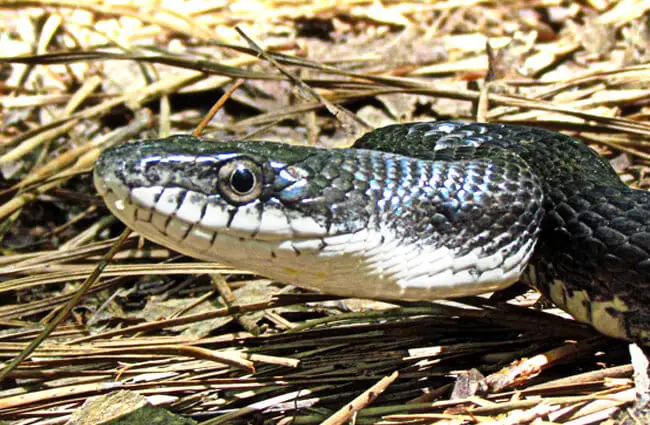



Black Racer Description Habitat Image Diet And Interesting Facts
Some, like Thamnophis, are considered mildly venomousThe feature is not a synapomorphyThey hatch within 45 to 70 days A hatchling or a baby red racer snake is around 13 inches (33 cm) long Its weight might range from 63 to 238 ounces The characteristic black stripes or marks are not present on a newborn The red coachwhip is nonvenomous snake, but it can become quite aggressive when threatened The blue racer is a long slender greyishblue snake reaching lengths close to two metres while some still surpassing that mark They have whitish ventrals with a whitegoldish face mask This species also has two preoculars and two postocular scales around the eye These snakes are very fast and can be skittish at times




Sizzling Summer Summons Myfwc Florida Fish And Wildlife Facebook
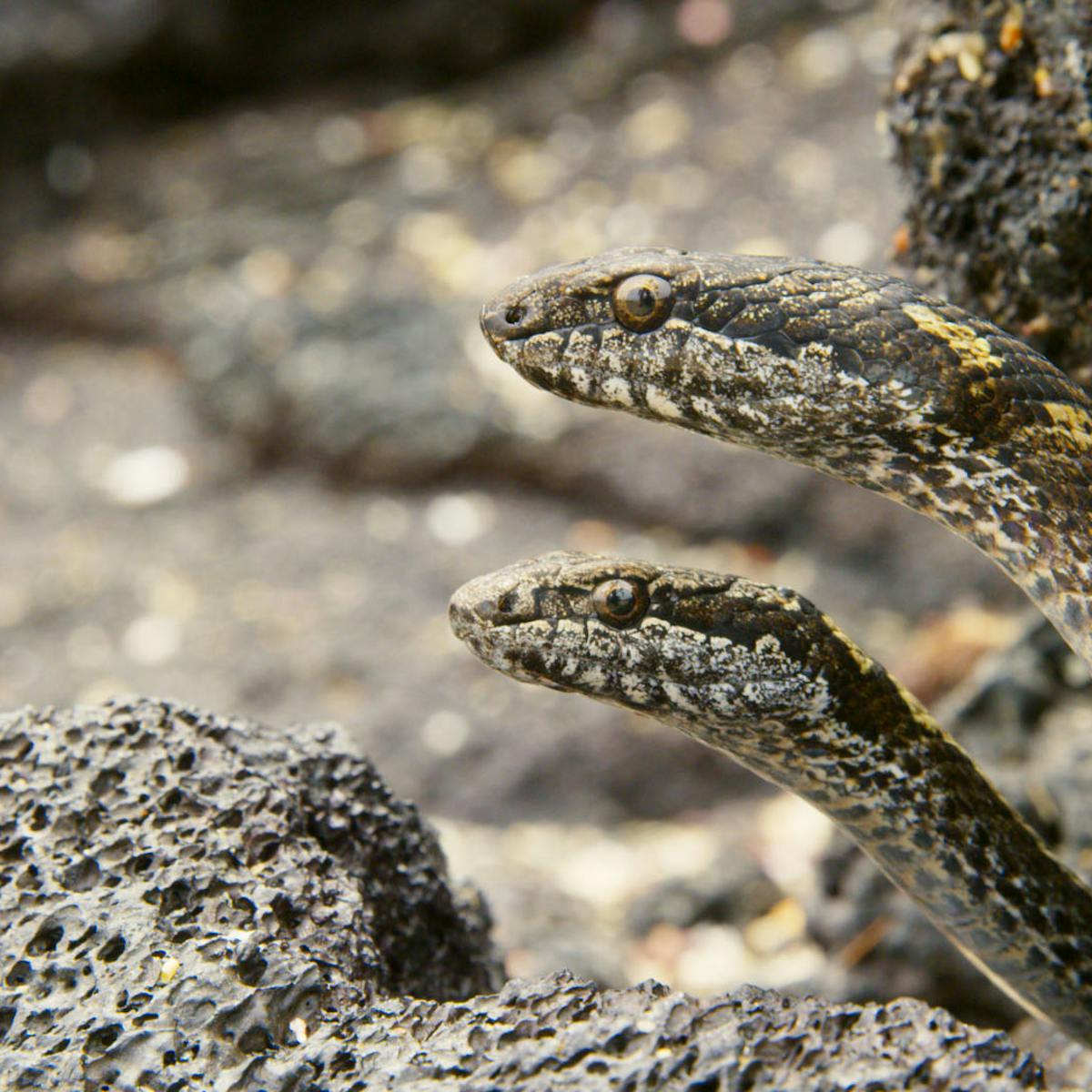



In Defence Of Racer Snakes The Demons Of Planet Earth Ii They Re Only After A Meal
Oviparous snakes and other animal species lay eggs which incubate in the environment and then hatch Most colubrids, such as king snakes and corn snakes, most elapids, like cobras, as well as birds, are classified as oviparous Other reptiles such as the BlueTongue Skink and RedEyed Crocodile Skink also give live birthRacer Rat Snake Diet includes small mammals, birds (and eggs), snakes, lizards, frogs, and some large insects (eg, caterpillars, cicadas) Eat mostly relatively small prey Adults feed mostly on mammals and birds (and their eggs) Juveniles eat lizards and frogs (especially treefrogs), switching to birds and mammals as they This jawdropping scene aired as part of the new series of the BBC's flagship natural history programme, Planet Earth II, and seems to have captured the imagination of millions Filmed on Fernandina Island in the Galápagos, the Galápagos Racer (Philodryas biserialis) is a slim, fastmoving, mildly venomous snake that reaches lengths of up to 1cm




North American Racer Florida Snake Id Guide




North American Racer Florida Snake Id Guide
The Racer is the only large, black snake in New England, USA, with smooth scales It's chin, throat and jaw are white or grey, and the belly is generally dark (with mixtures of grey, blue, or black) from the throat back to the tail Smooth scales give this snake a silky or satinlike appearance A juvenile racer is grey with large brown, blackSea snakes dine on fish and eels Snake Teeth The type of teeth a snake has is dependent upon how the species catches food All nonpoisonous snakes have teeth on the upper jaw and the lower jaw A snake can often grow more teeth as needed because teeth are sometimes lost while feeding The teeth are hookshaped and angle toward the throatThere are about 35 species and subspecies of Garter snakes Some of these have teeth, others do not
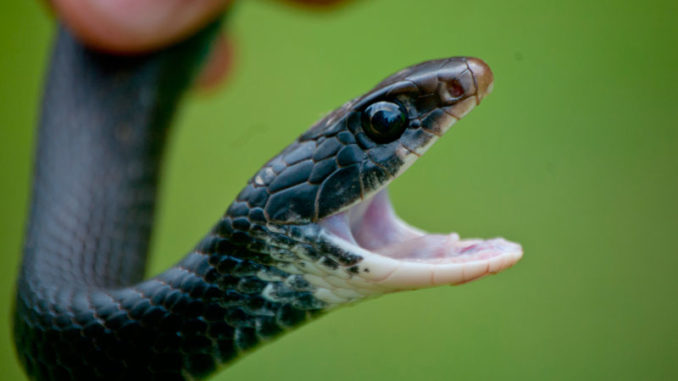



Snake I D Louisiana S Snakes Identified Louisiana Sportsman




North American Racer Florida Snake Id Guide
Nonvenomous snakes have tiny, recurved teeth that are useful for holding and swallowing prey Venomous species have these same recurved teeth, as well as enlarged teeth for injecting venom A rattlesnake's fangs are hollow and function like hypodermic needles to conduct venom into the body of its prey Blue Racer Snake Size and Appearance Average Size 35 Feet The blue racer is a thinlybuilt snake that reaches an SVL (snouttovent length) of up to 60 inchesThat doesn't even include their tail, which can sometimes push their size to over six feet!They're the largest snakes in most of their native rangeBites, Predation and Combat Dance By Anders Nielsen, Phd In general rat snakes are not venomous, and they should be known for being nonvenomous However, studies (Fry et al 03 1) show that a few rat snakes, such as the asian rat snake (Elaphe radiata), are slightly venomousThis is just an evidence of the early origin of venom in snake lineages
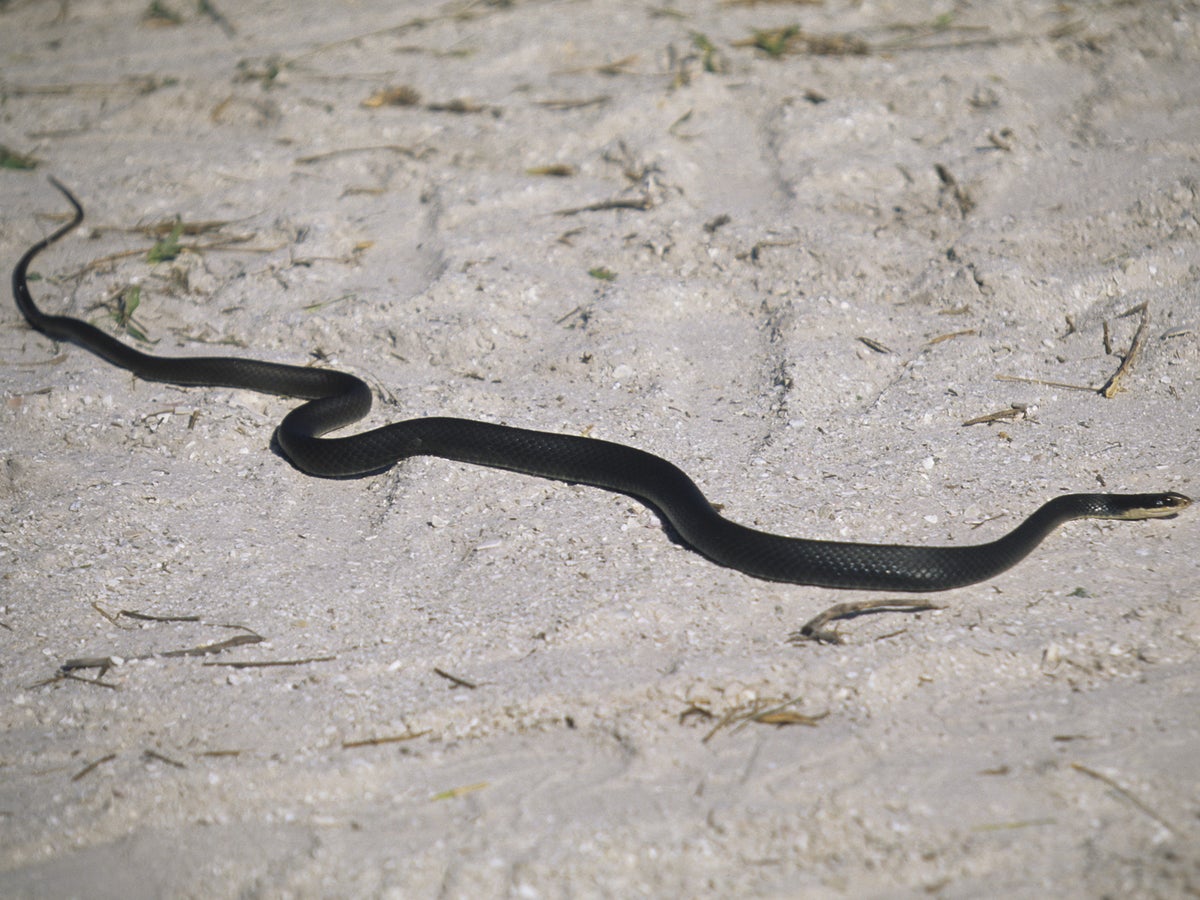



In Defence Of Racer Snakes The Demons Of Planet Earth Ii The Independent The Independent




Black Racer Snake Facts And Beyond Biology Dictionary
While they do have teeth, four rows on the top and two on the bottom, the teeth are made for grabbing, hooking and holding their prey, not chewing Not all snakes have fangs; No Rat snakes don't have fangs because they are nonvenomous Only venomous snakes possess fangs Rat snakes possess several small teeth Are rat snakes poisonous to dogs?Aglyphous snakes (lacking grooves) have no specialized teeth;
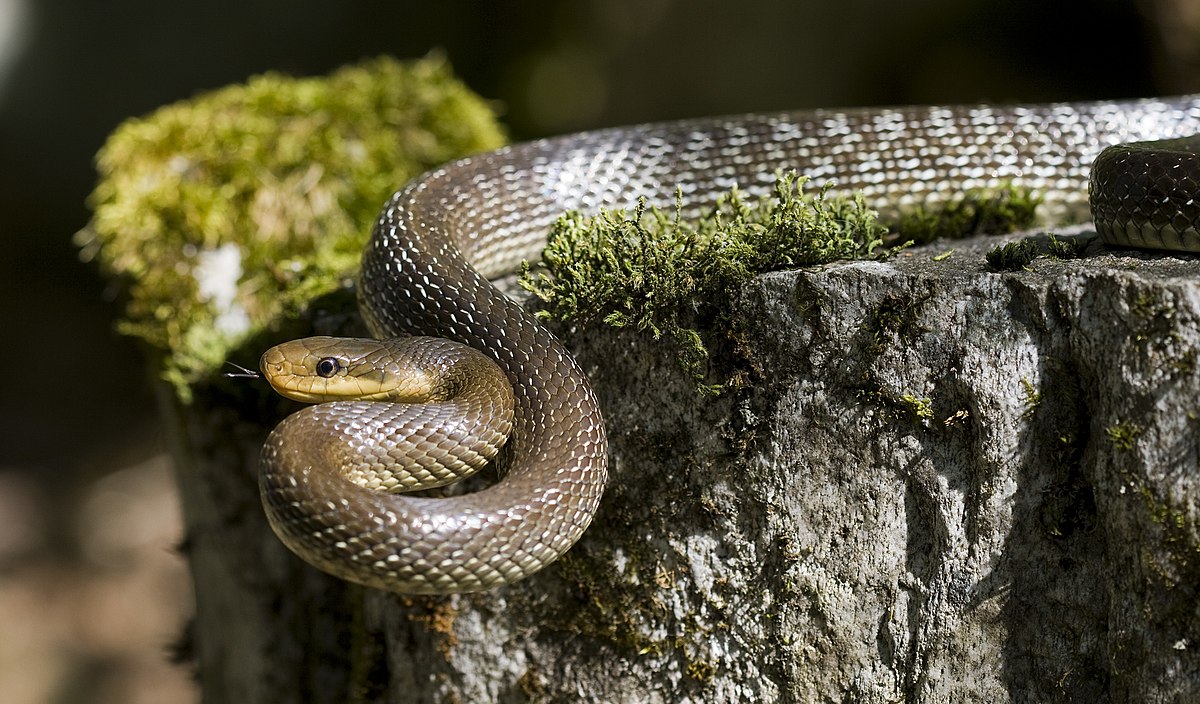



Rat Snake Wikipedia




Facts About Southern Black Racer Snakes Owlcation
In order to identify if the bite is from a Black Racer Snakes, you can check its mouth as nonvenomous snake have teeth instead of fangs Poisonous snakes tend to have fangs and on the other side nonpoisonous snake have teeth You can easily notice your Black Racer Snakes having teeth instead of fangsTeeth These are nonpoisonous snakes, and hence, and do not excrete poison while giving bites, like the way their venomous counterparts use their fangsHowever, they have long teeth, which can make the lacerations bleed profusely Sexual Dimorphism The females are usually a little larger and heavier than their male counterpartsThey also grow relatively faster than males While snakes are just being snakes and doing what snakes do, their encounters with humans have led the latter to regularly hypothesize bad moods, bad intentions and bad actions to




Wonders Of Wildlife Black Racer Awf
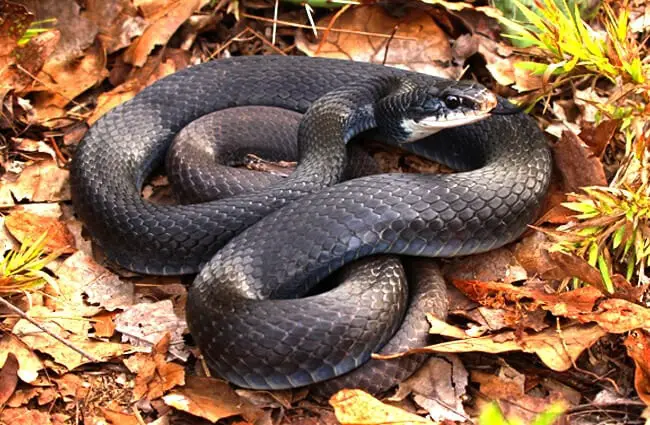



Black Racer Description Habitat Image Diet And Interesting Facts
The southern black racer can be mistaken for a cottonmouth – a venomous snake more commonly called a water moccasin The venomous snake has a white lining inside of its mouth Racers are nonvenomous and do not breed with cottonmouths Natural enemies include such birds of prey as hawks, including the redshouldered hawk and broadwinged hawkEach tooth is similar in shape and often sizeWhen teeth vary in size, as in some bird eaters, they do not vary in shape Most aglyphous snakes are nonvenomous;When thinking about snakes, we usually imagine beady little eyes and two sharp, poisonous fangs, followed by a row of razored teeth But the Garter snake is one exception to that particular stereotype Do Garter snakes have teeth?
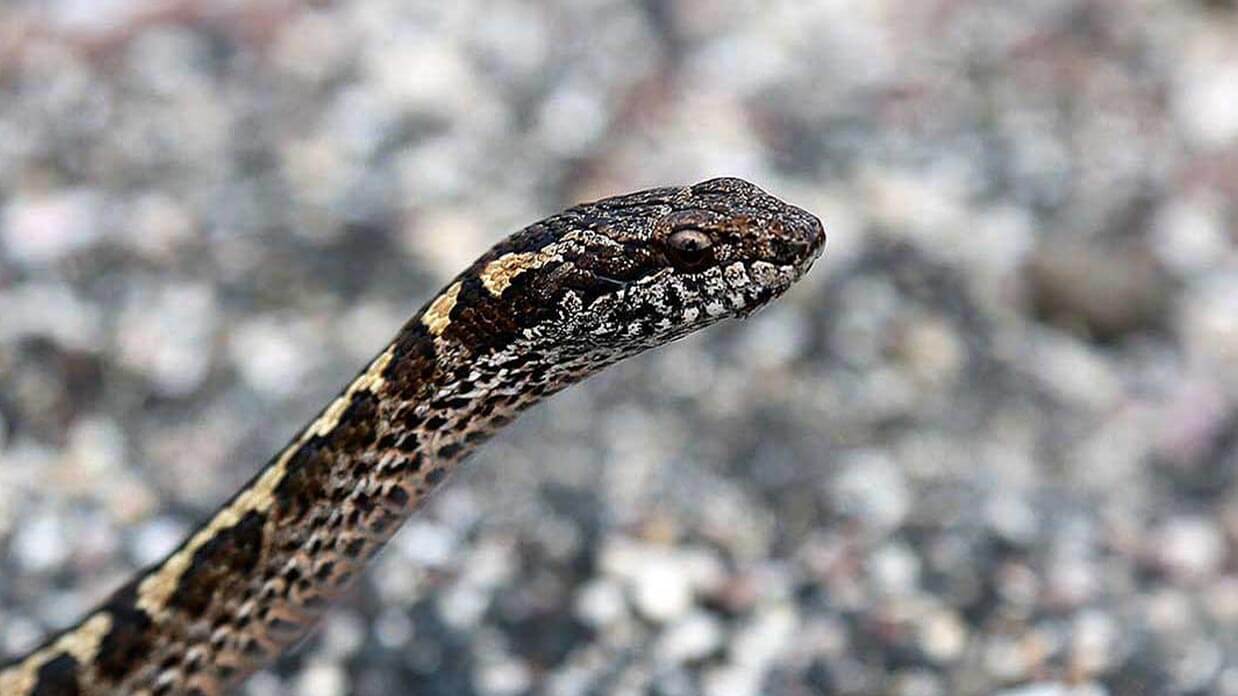



Galapagos Racer Snake The Story Of How A Snake Went Viral On Youtube




Do Garter Snakes Have Teeth Or Fangs
In this video, you will learn about the differences between the black rat snake and black racer snake as I present two different individuals I caught in the I told you, Gopher snakes are nonvenomous snakes and they do not have Venom glands Adding to that, a nonvenomous snake also doesn't possess fangs like venomous snakes Nonpoisonous snakes have teeth instead of fangs You cannot notice in your Gopher snakes that they have teeth instead of fangs Garter snakes are small, between 23 to 30 inches in length They have been known to reach lengths of five feet in rare cases They are often stoutbodied with a ridge down the center of their back One more defining characteristic of the Garter snake is its dualcolored tongue




Blue Racer Snake Breed Profile Facts Speed Pictures Care Everything Reptiles




The Coachwhip Snake Masticophis Flagellum Desertusa
Black snakes (racers or black rat snakes) in your area do not have fangs They have sharp, backcurved teeth, as beowulffsaid Getting bitten by a black snake is mildly painful and might scare a child, but that doesn't warrant a death sentenceBlack racer snakes are nonvenomous, but suddenly sighting them could cause quite a scare (DepositPhotos) Facts About Black Snakes Diet Mostly eat rodents, lizards, birds and bird eggs The Eastern rat snake, like the Eastern racer, is a constrictor They can climb trees and, if you don't protect your birdhouses with baffles, they willThe snake has dark vertical lines by each nostril and a pale snout and chin The Water Moccasin and the black racer are often mistaken for each other even though the racer is not venomous What is unique about the Water Moccasin is that it is in the family of pit vipers and because of this they have heat sensors in their eyes and in their noses




Adw Coluber Constrictor Information




In Defence Of Planet Earth Ii S Racer Snakes
The snake's identity was clear, however It was a Southern Black Racer, COLUBER CONSTRICTOR PRIAPUS On the streambed's sandy floor there was still some fighting to do The frog's four powerful legs scratched, pounded, pushed, and held on in every conceivable manner to slow the body's slide down the snake's gullet We vividly recall that striking image of a snake's fangs But, if you've never been bitten by a snake or looked inside its mouth, you might wonder if snakes have other types of teeth as well as fangs Most snakes have fangs at the front of their mouth, and some species can have up to 0 teeth running along their jaws A snake's teeth are usually covered by the gums Most snakes have several rows of teeth They usually haveHenry Gaudet A red racer snake is nonvenomous and may also be referred to as a coachwhip snake The red racer, also known as the masticophis pisceus or red coachwhip, is a nonvenomous snake native to southern California, Arizona and Nevada in the United States and Baja California and Sonora in Mexico Red racers are slender snakes, with adults ranging from 36 to 102 inches
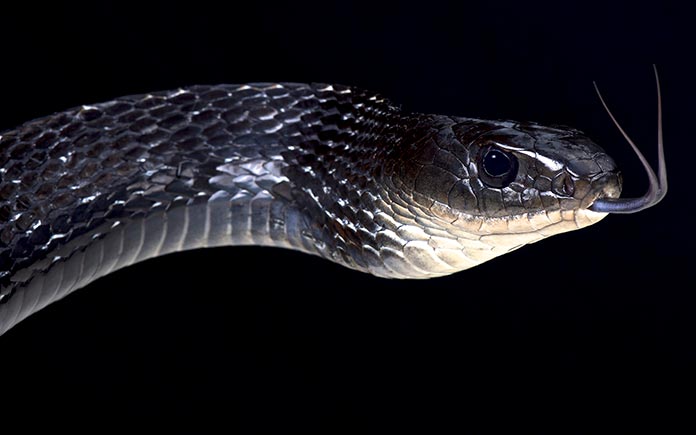



Black Snakes What You Should Know Today S Homeowner




Snake Profile Blue Racer Snake With Pictures
At first glance, a garter snake might not appear to have any teeth at all These snakes lack the stereotypical large front fangs you might imagine when you think of snake teeth According to Herpetologic a, not only do garter snakes have teeth, but these teeth come in distinct types based on their shape Three Types of Garter Snake Teeth Blue Racer snakes are nonvenomous but they have a lot of curved teeth that make for a painful bite To avoid bites it is best to start with a young snake in a large cage and get it used to being around people Blue racer snakes are aggressive and can strike from a long distance They do not tolerate being picked up Everyone was talking about it Shared relief was felt across the world when the iguana somehow squirmed free of those nasty Galapagos racer snakes So let's see what all the fuss is about (spoiler alert the iguana manages to escape the snakes by the skin of his teeth)




Black Racer Snake Facts Habitat Diet Adaptation Pictures




Blue Racer Snake Breed Profile Facts Speed Pictures Care Everything Reptiles




Eastern Rat Snake National Wildlife Federation



3




An Aggressive Black Racer Snake Stock Photo Offset




Blue Racer Snake Breeding Info Care Sheet With Pictures



Black Racer Information Facts




Snake Faq Texas Parks Wildlife Department




Blue Racer Snake




Racer Coluber Constrictor




Blue Racer Snake Breed Profile Facts Speed Pictures Care Everything Reptiles




The Snakes




Snake Profile Blue Racer Snake With Pictures



Eastern Rat Snake




Facts About Southern Black Racer Snakes Owlcation




Fzlobnpojhem




Eastern Yellow Bellied Racer Missouri Department Of Conservation



Copperheaded Racer Snake Non Venomous Not Dangerous Thailand Snakes
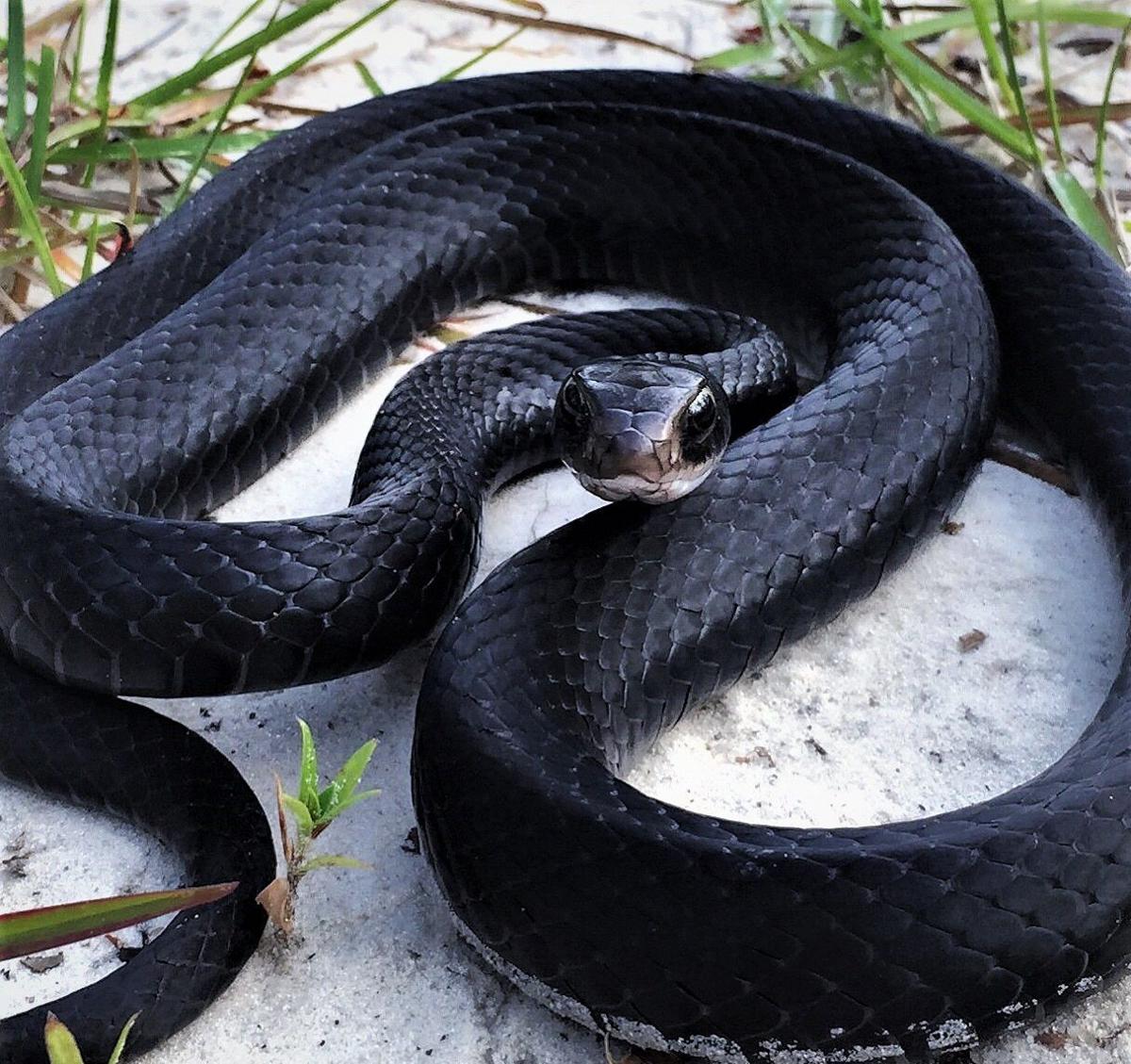



Black Racers These Swift Wrigglers Offer More Help Than Harm Local Sports Paducahsun Com




Black Rat Snake The Maryland Zoo
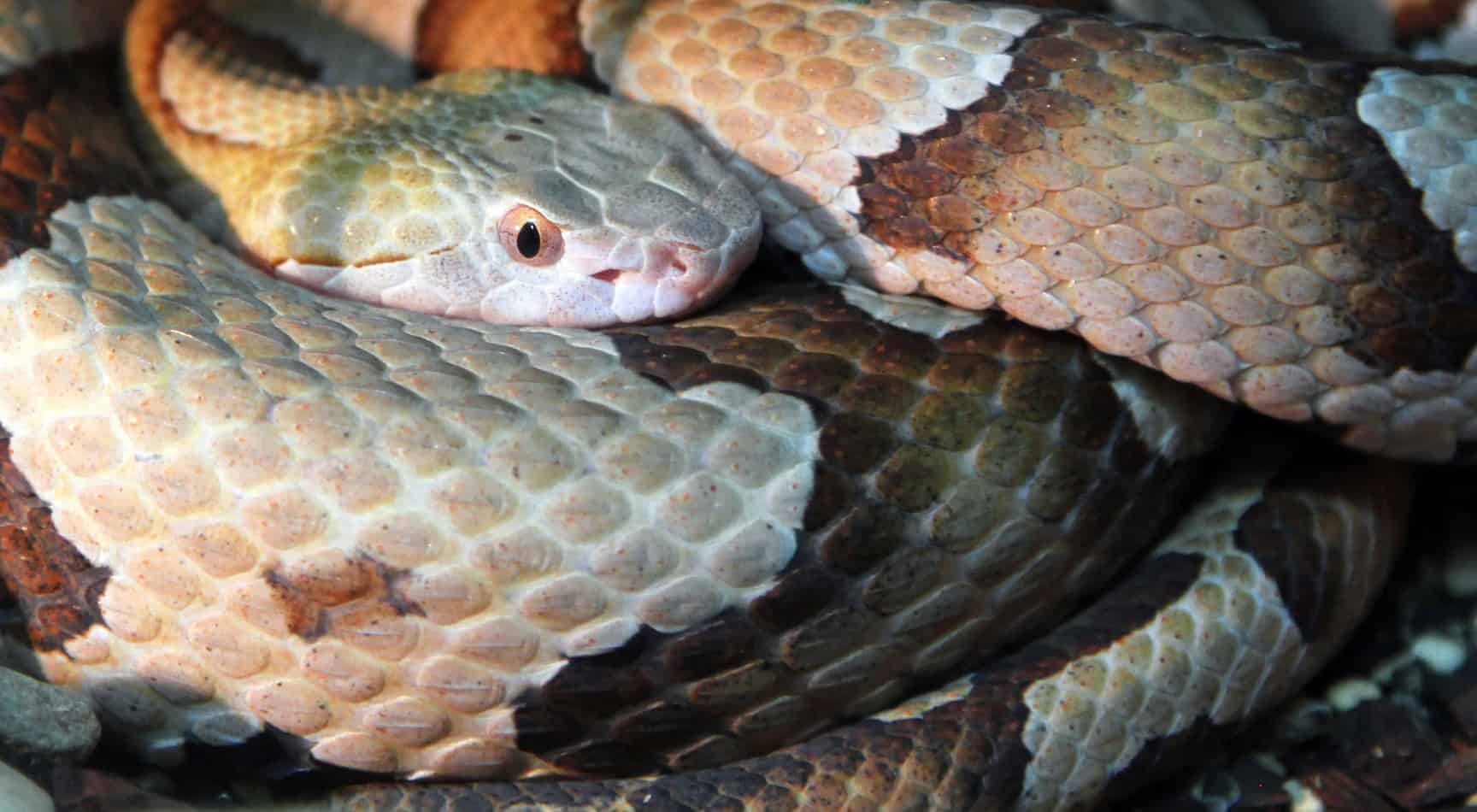



Copperhead Snakes Species Profile With Bite Information Facts And Pictures Embora Pets




Black Racer Snakes Will Bite Youtube




Species Profile Black Racer Coluber Constrictor Srel Herpetology



Education




Florida Snakes Are Usually Harmless Usually



Q Tbn And9gcr Skdwzhn90goclhygljoqdioxds3w17pa2 Oy1x717ffms1ie Usqp Cau
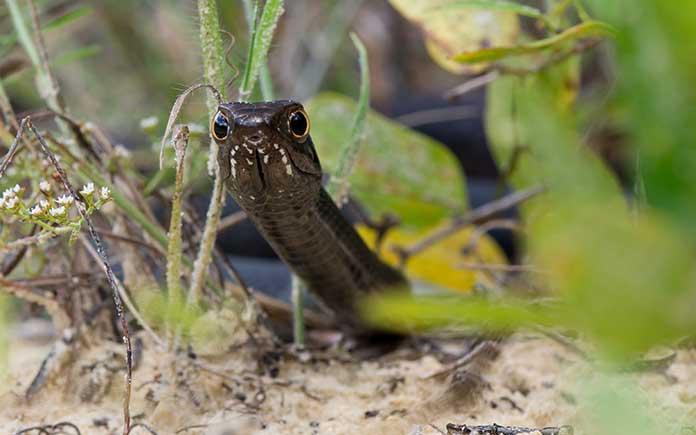



Black Snakes What You Should Know Today S Homeowner




Black Snake Reptile Britannica




Snake Teeth 17 Really Interesting Snake Teeth Facts




What Is A Black Snake With Pictures




Species Profile Black Racer Coluber Constrictor Srel Herpetology



Southern Black Racer Snake Facts




Colorado S Snakes What When Where Common Poisonous And Non Venomous Species



Www Volusia Org Core Fileparse Php 52 Urlt Venomousnonvenomoussnakesoffloridafwc Pdf




Eastern Racer Oklahoma Department Of Wildlife Conservation



Snakes Of Nebraska Nebraska Game And Parksnebraska Game And Parks



3




Southern Black Racer Snake Facts Learn Natural Farming
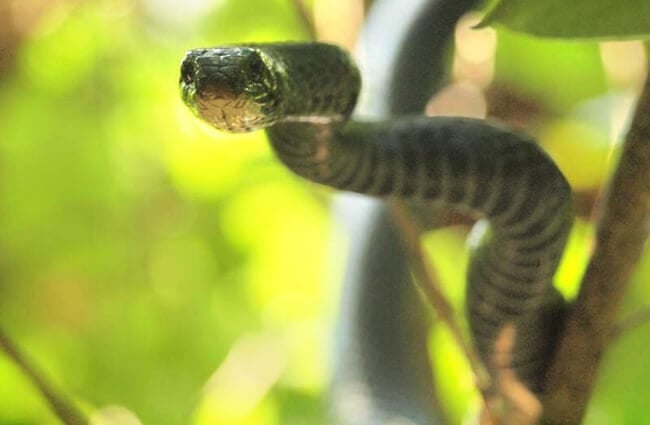



Black Racer Description Habitat Image Diet And Interesting Facts




Black Racers Living On The Edge Articles Features



Kingsnake Com Herpforum I Love Racers But They Re A Tad Nuts



Northern Black Racer




Black Rat Snake Bite Relocation Wild Report Short Youtube



Western Yellow Bellied Racer Coluber Constrictor Mormon




The Blue Racer By Ayman Ahmed




Are Black Racer Snakes Poisonous Inpetcare




Blue Racer 1 Of 22 Non Venomous Snakes In Ohio Ohio Snakes
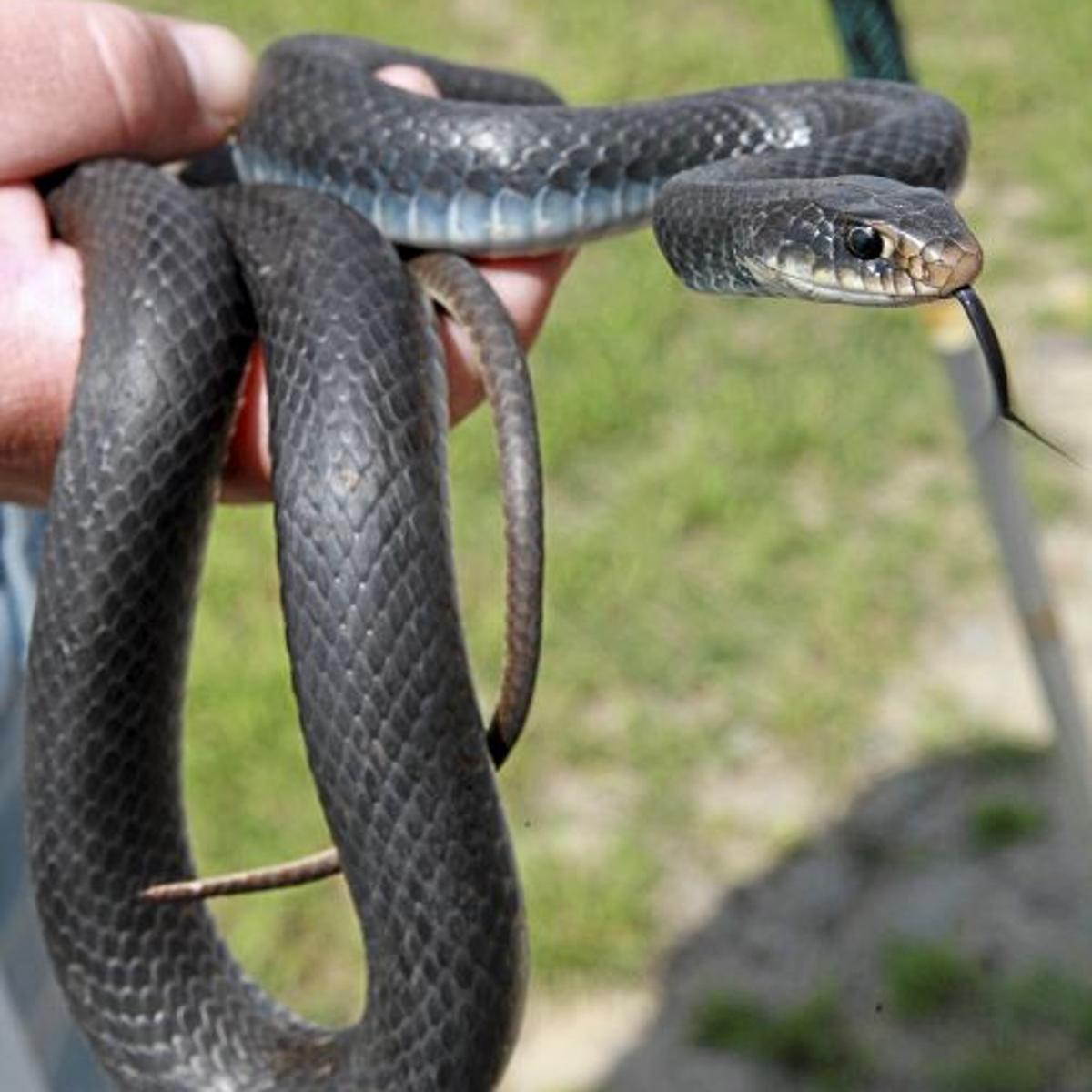



World Around You Black Racer Snakes Generally Lightning Fast And Territorial Sports News Tulsaworld Com




Interesting Facts About Blue Racer Snake Newnews360




Black Racer Snake Facts And Beyond Biology Dictionary




Black Rat Snake Reptile Britannica




Blue Racer 1 Of 22 Non Venomous Snakes In Ohio Ohio Snakes



Q Tbn And9gcrghfxkrcg2 Lrde F9w1hjzdhaft46j79mpx Jkvfesaee7rnv Usqp Cau




The Black Racer Snake Facts Bite Test Youtube
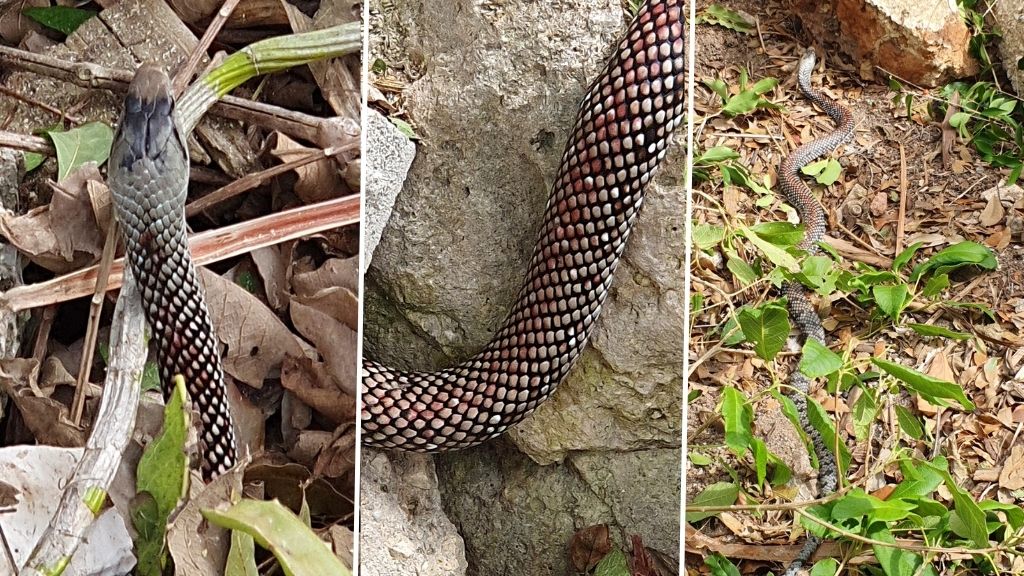



Cayman Woman Encounters 6 Foot Snake While Out Gardening Loop Cayman Islands




Coluber Constrictor Flaviventris Wikipedia




Blue Racer Snake Facts




Rare Two Headed Snake Found In Florida




North American Racer Florida Snake Id Guide




Black Racer Snake Facts Habitat Diet Adaptation Pictures




What S Usually Worse A Racer Bite Or A N Water Snake Bite Field Herp Forum
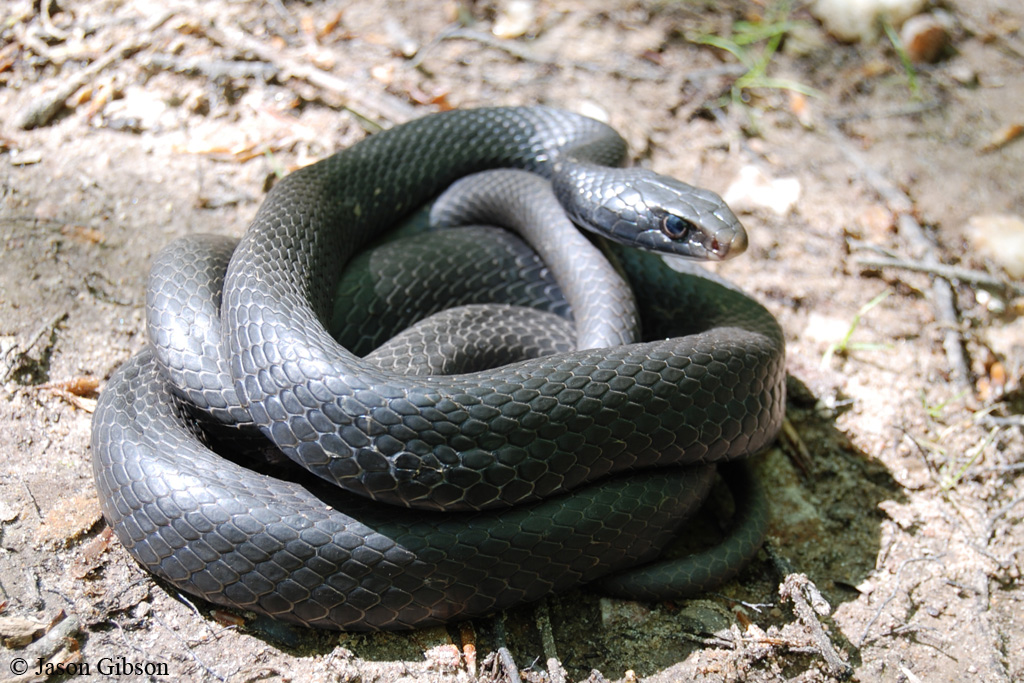



Northern Black Racer




Black Racer Snake Facts And Beyond Biology Dictionary




Is The Puerto Rican Racer Alsophis Portoricensis Really Harmless A Case Report Series Wilderness Environmental Medicine




Blue Racer Snake Breed Profile Facts Speed Pictures Care Everything Reptiles




Eastern Yellow Bellied Racer Missouri Department Of Conservation




Facts About Southern Black Racer Snakes Owlcation




Blue Racer Snake Breed Profile Facts Speed Pictures Care Everything Reptiles



Western Yellow Bellied Racer Coluber Constrictor Mormon




A Wild Florida Black Racer Snake In An Aggressive Display Stock Photo Alamy




Creeped Out At Home With Snakes In Crozet Crozet Gazette




Southern Black Racer Snake Facts
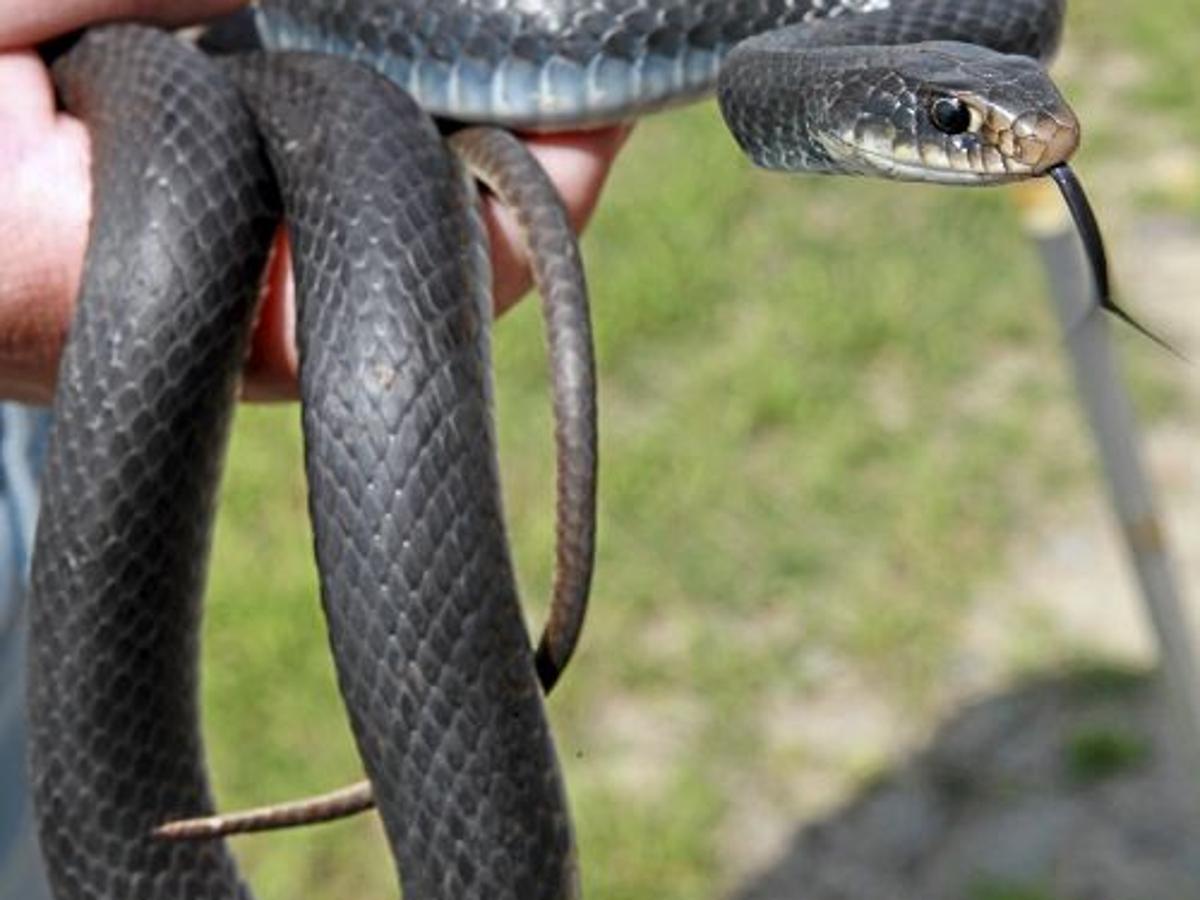



World Around You Black Racer Snakes Generally Lightning Fast And Territorial Sports News Tulsaworld Com
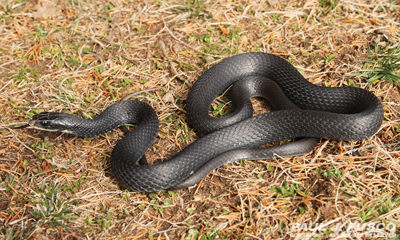



Northern Black Racer




Black Racer Snake Facts Habitat Diet Adaptation Pictures




Constriction Ohio History Central



Florida Snake Photograph 017 Detail Photo Black Racer




Do Black Rat Snakes Have Teeth Teethwalls




Black Racers Living On The Edge Articles Features



Southern Black Racer



Helping Iding Think It S A Black Racer About 100 Miles North Of Miami On The Coast Snakes




Snake Profile Blue Racer Snake With Pictures



0 件のコメント:
コメントを投稿